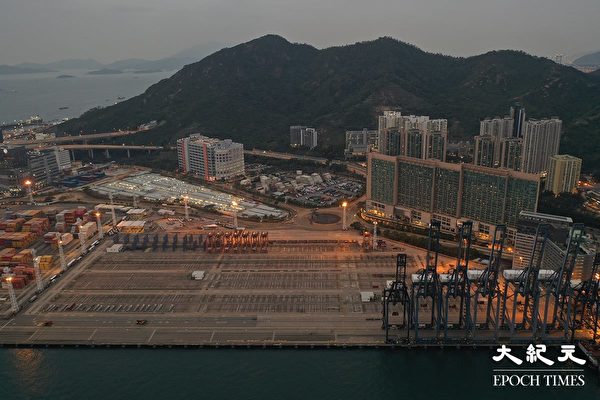In a recent report by Alphaliner, a shipping industry research organization, it was revealed that in 2023, the container throughput at Hong Kong’s port fell to the 11th position, dropping out of the top ten for the first time. The Executive Director of the Hong Kong Shippers’ Council, He Lik-kei, stated in an interview with New City Radio on the 23rd morning that with the relocation of production lines outside of South China, Hong Kong’s maritime industry is facing challenges and is expected to continue in a difficult situation in the coming years.
He Lik-kei believes that the export market in Hong Kong is showing signs of improvement, citing the Hong Kong Trade Development Council’s Export Confidence Index for the first quarter of 2024, which indicates a current index of 37.9 in the “Sales and New Orders” category, with an expected index of 49.9, reflecting optimism among Hong Kong traders for the future. The rebound of China’s PMI has also contributed to a slight growth in Hong Kong’s export figures.
However, he pointed out that Hong Kong’s exports still face risks and challenges. According to relevant surveys, over 83% of respondents believe that the biggest risk in current exports is economic risks, followed by rising transportation costs, and 58% of respondents see geopolitical risks as a threat to Hong Kong.
He continued by stating that Hong Kong’s trade performance is not poor, with air freight figures consistently rising, and Hong Kong International Airport maintaining its position as the world’s busiest cargo airport in 2023. However, he candidly admitted that “we are lacking in maritime shipping,” as the throughput volume dropped out of the global top ten last year, indicating a crisis in that area.
He also predicted that these trends will persist, and the situation is less than ideal. He explained that with the overall relocation of production outside of South China and regional upgrades and transformations, low-value goods will transition to high-tech goods, leading to a shift towards air freight. The maritime volume in the South China region is not experiencing significant growth, and with densely concentrated port clusters, terminals like Yantian and Nansha will further expand. These regions, closer to the sources of goods, pose significant threats to Hong Kong.
Furthermore, as shipping company alliance routes are restructured, the impact has begun to surface since the beginning of this year. Some shipping companies will reduce the number of direct port calls and opt for more transshipment services, which will have a more severe impact on Hong Kong. He Lik-kei also noted that in January of this year, the port in Hong Kong saw an 18% increase in business, but February and March witnessed declines of 12% and 13%, respectively. Nevertheless, he believes that despite the challenges confronting Hong Kong’s maritime development, container terminals still maintain a certain level of throughput, and thus, the current situation should not stifle the development of maritime shipping.

